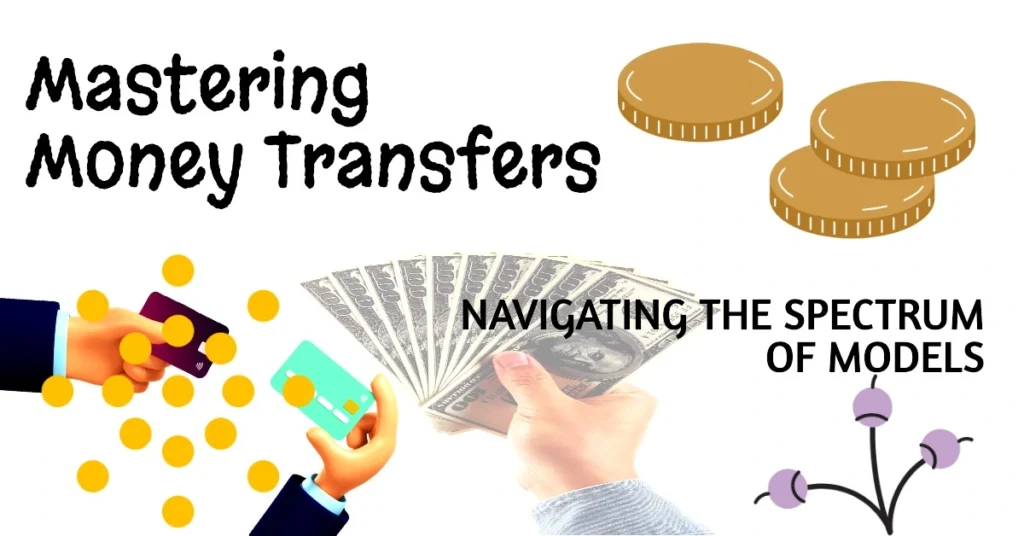Envisioning a world where transferring money across borders is as easy as clicking. This is not a distant dream but today’s reality in the digital age. In today’s digital age, the concept of how to start a money transfer business has become more than just a financial venture, It’s a bridge connecting global economies.
The journey of starting a money transfer business has evolved from traditional methods to innovative digital money transfer services. The rise of this industry isn’t just about technology, it’s about connecting lives and fueling economies. With each transaction, there’s a story of someone supporting a loved one or a business expanding its reach.
As we explore this thriving sector, we will uncover the essentials of licensing, compliance, and business setup. These are more than just regulatory hurdles. They are stepping stones to building a trusted and successful venture. fer business. Now, let’s explore this realm where fintech ventures address global problems and generate opportunities for both consumers and entrepreneurs.
Mapping the $930 Billion Money Transfer Industry
The global remittance space is undergoing tremendous growth, expected to reach a staggering $930 billion by 2026 according to World Bank estimates. Driving this expansion is the growing migrant workforce seeking to support families internationally through convenient money transfer channels.
Key trends like migration, globalization, digitization, and increasing financial inclusion are catalysts for the rising cross-border money flows. We examine the market dynamics powering this expansion.
Navigating the Spectrum of Money Transfer Models

From traditional agents to emerging cryptocurrency platforms, transmitters now integrate various transfer modalities to facilitate affordable convenience. We outline prevalent structures like bank-centric wire transfers, online platforms, mobile apps, and peer-to-peer (P2P) networks. Underpin the global conveyance infrastructure today, weighing their strengths and weaknesses.
What Drives Money Transfer Costs and Friction
While innovation aims to minimize fees, pricing pressure persists as a barrier for many migrants. Variables like forex fluctuations, provider margins, and licensing overheads contribute to costs frequently amounting to 7% of send amounts. New entrants must balance affordability and profitability concerns amidst structural cost drivers. As newcomers enter this arena, understanding these variables is vital to stand out.
Understanding Compliance Requirements
Navigating the compliance landscape is a critical step in establishing a money transfer business. Before finalizing services, analyzing state-level expectations across bond mandates, capital thresholds, reporting, and application timelines is imperative.
Key Points:
- Researching federal and state regulatory frameworks to ensure your business aligns with legal standards.
- The pivotal role of obtaining a money transmitter license is a non-negotiable aspect of legal operation.
- Outlining essential prerequisites such as net worth requirements and surety bonds.
- A detailed look at the application procedure, demystifying processing times, and documentation intricacies.
Crafting a Strategic Business Plan
A well-crafted business plan is more than a document; it’s a strategic compass guiding your money transfer business toward industry success. It serves as a strategic plan that directs every facet of your company’s path, not just a document. It’s the plan that deftly combines your vision with reality. Laying the groundwork for an enterprise that speaks to both the modern financial services industry and the digital era.
Key Points:
- Breaking down the essential components of a business plan: from the executive summary to the management team.
- The significance of thorough market research in understanding the digital remittance market and identifying target demographics.
- Strategies for establishing competitive pricing and navigating the complexities of regulatory compliance.
- Practical advice on financial planning and risk assessment, crucial for sustaining and growing in the fintech venture.
Structuring Your Money Services Business
Choosing the right business structure is a pivotal decision in the journey of setting up a money transfer business. It’s about aligning your business goals with legal and financial frameworks.
Key Points:
- Deciding on the business entity: Partnerships, limited liability companies (LLC), corporations, etc., and understanding their implications.
- Navigating taxation policies, registration formalities, and business registration requirements with relevant authorities, including the U.S. Treasury Department.
- Reviewing capital requirements, exploring sources of investment, and formulating an investment strategy.
- Planning the organizational hierarchy and reporting structures to optimize business operations.
Establishing a Strong Market Position
Gaining visibility amidst veterans like Western Union requires crisp messaging rooted in customer insights. We analyze your niche potential across retail, business, and program remittance segments to shape differentiated propositions.
- Evaluating the Competitive Landscape: Assess offerings from global and regional players through dimensions like transfer modes, corridor coverage, pricing models, and target groups to identify whitespace opportunities.
- Sizing Market Potential: Analyze World Bank migration data and segment flow patterns to quantify addressable consumers and business partners in key send-receive corridors.
- Crafting Value Propositions: Interview customer panels and journey map needs of prime prospects to shape messaging conveying unique strengths over substitutes.
- Building Partnership Networks: Explore strategic tie-ups with post offices, mobile wallets, banks, and SMB aggregators as a cost-effective consumer acquisition strategy.
- Detailing promotional schemes and partnerships: Plan out promotional activities and explore partnerships that can enhance your visibility and credibility. This might include collaborations with local businesses, financial institutions, or technology providers in the financial technology sector.
- Deploying Digital Campaigns: To reach your target audience, develop a thorough digital marketing strategy that makes use of social media, content marketing, and SEO. Utilize marketing strategies that align with the latest trends in the digital age, ensuring your services are visible to those looking for digital money transfer solutions.
Using the above model, you may create outreach plans and positioning strategies that are specific to the target segments and proposition pillars of your endeavor.
Architecting Robust Operational Capabilities
Before accepting first transfers, designing an end-to-end process flow spanning compliance, payments infrastructure, and customer experience is vital. We provide actionable advice on:
- Selecting Banking and Technology Partners: Assess leading payment rails and core banking providers that enable reliable global coverage. Consider platform capabilities, integration mechanisms, and compliance-centric KYC/AML procedures.
- Modeling Process Workflows: Map approval protocols, transfer steps, reconciliation, and settlements outside core systems.
- Masking Infrastructure Costs: Size up expenditure across talent, licensing, banking, software, security, and administration to project realistic overheads.
- Installing Security Safeguards: Implement layered defenses spanning perimeter, network, application, data, and physical realms to continually manage risks.

Conclusion
In wrapping up, we have navigated the intricate licensing pathway and business setup essentials for launching a successful money transfer business. This journey, while demanding, opens doors to the vast and ever-expanding fintech sector.
The digital age has revolutionized how we handle money, making services like online money transfers not just convenient but essential. For aspiring entrepreneurs, the digital remittance market offers immense potential. It’s a realm where innovative marketing strategies and cutting-edge technology converge, creating opportunities for substantial growth and success.
Let’s draw inspiration from the success stories within this industry. These narratives aren’t just tales of triumph but are testaments to the power of entrepreneurial spirit, resilience, and strategic business pro-planning. They encourage risk-taking and innovation, essential ingredients for success in the financial technology world.
As you embark on this venture, remember that the journey of establishing a money services organization or a remittance service provider is not just about navigating regulatory requirements or securing a money transmitter license. It’s about finding a place in a fast-paced field and having a significant influence on the financial sector.
Muhammad Asif Saeed has extensive experience in commerce and finance. Specifically, He holds a Bachelor of Commerce degree specializing in Accounts and Finance and an MBA focusing on Marketing. These qualifications underpin his understanding of business dynamics and financial strategies.
With an impressive 20-year career in Pakistan’s textile sector, including roles at Masood Textile (MTM) and Sadaqat Limited, excelling in business & financial management. His expertise in financial and business management is further evidenced by his authoritative articles on complex finance and business operation topics for various renowned websites including businessproplanner.com,businesprotips.com,distinctionbetween.com, trueqube.com, and bruitly.com, demonstrating his comprehensive knowledge and professional expertise in the field.

